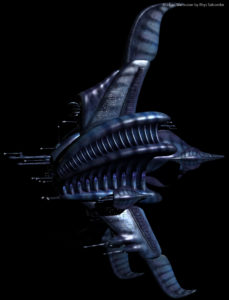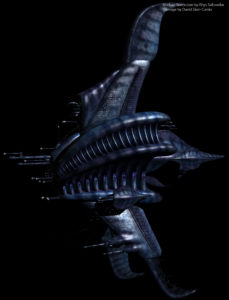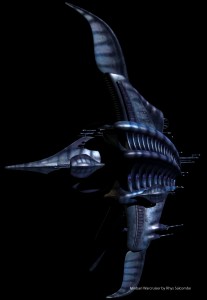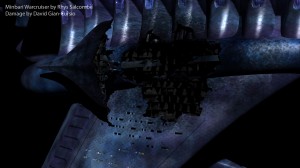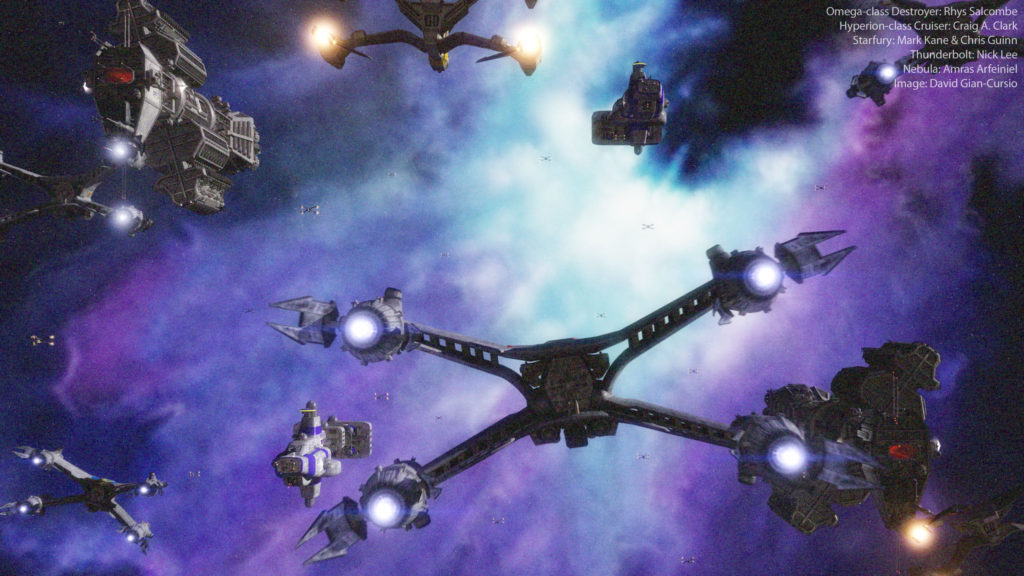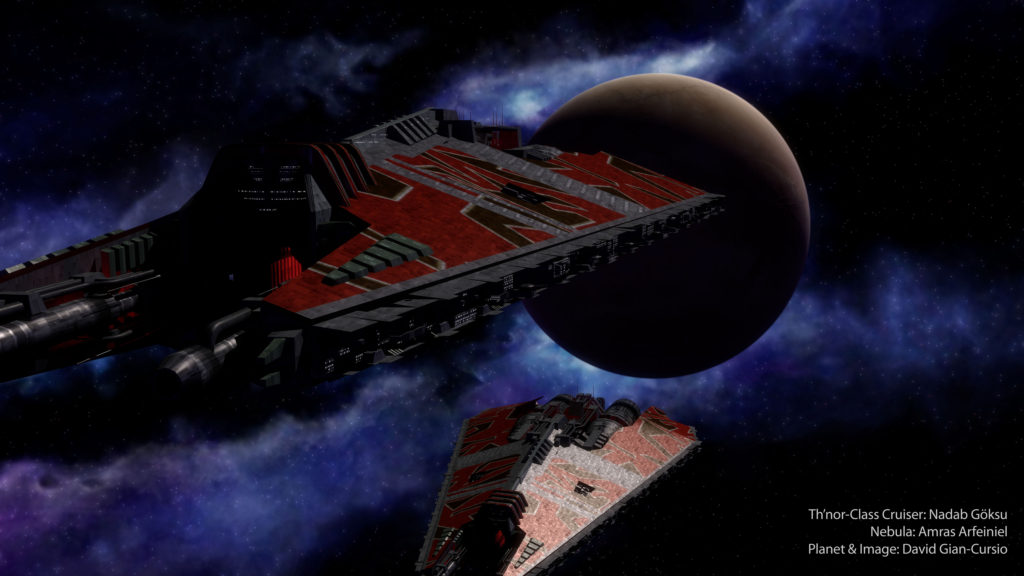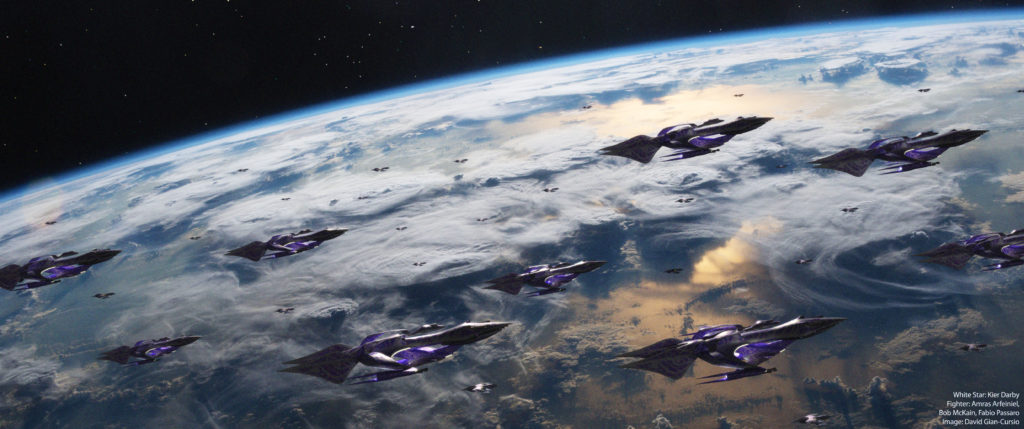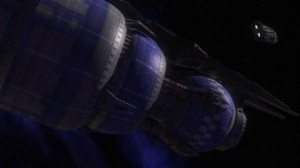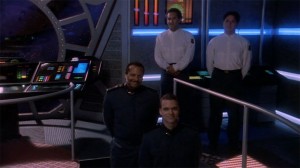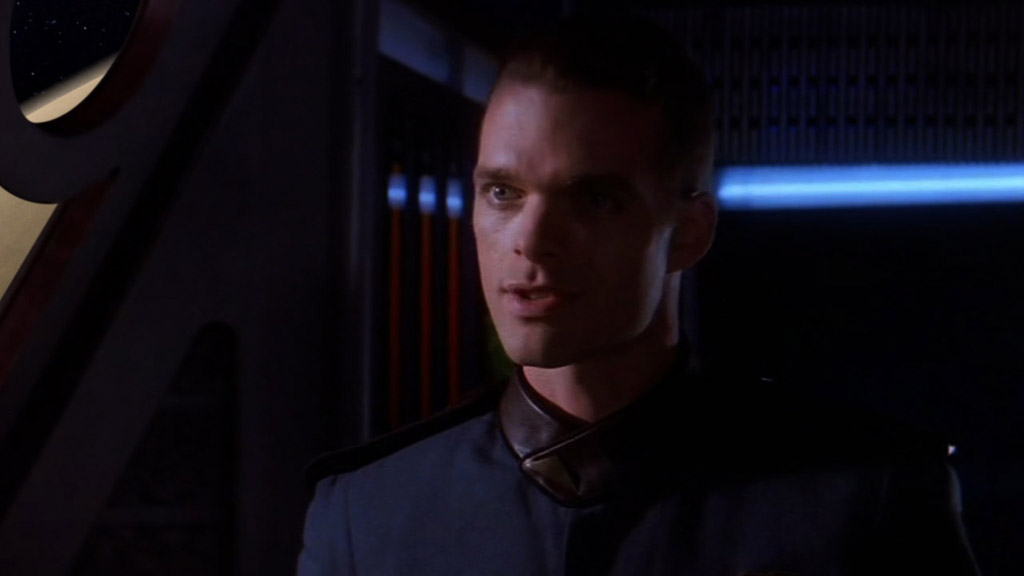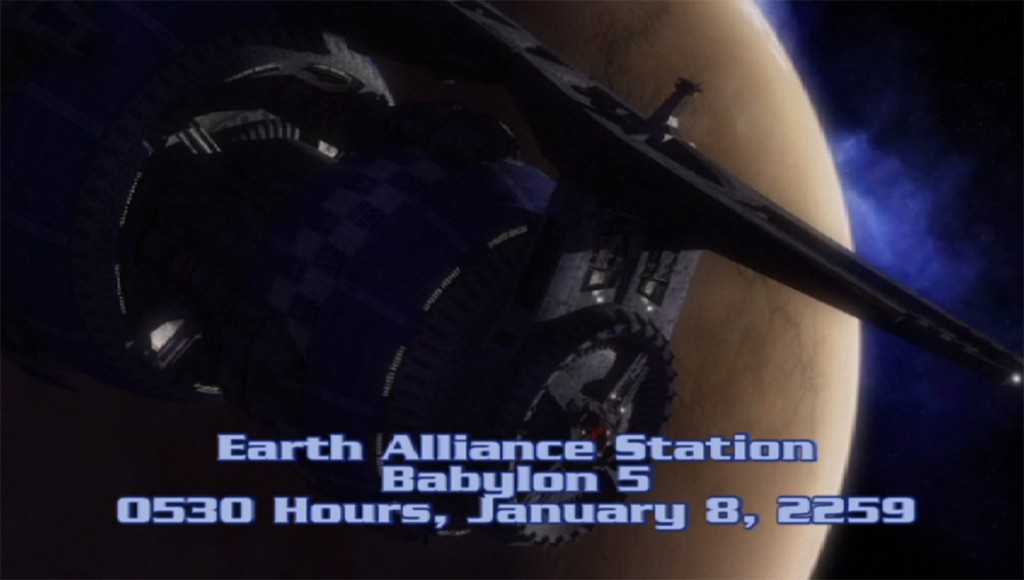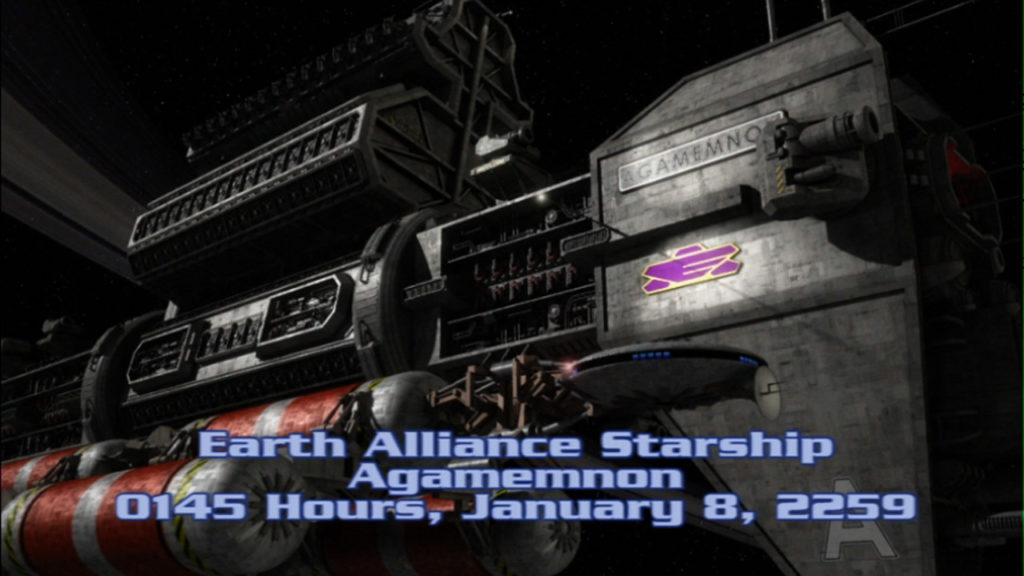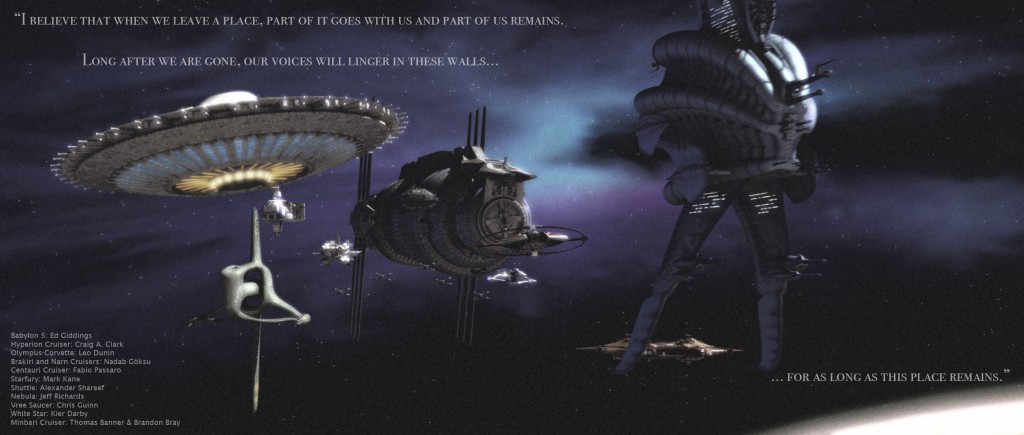It’s been a while since I updated this project, but a few weeks ago, it came back up in conversation. I realized at the time that I was now spending a lot of time sitting by a high-power desktop that wasn’t usually doing anything, and decided to take advantage of it.
I did end up trying Autodesk MatchMover. It handled the shot of Ivanova and Corwin from the last update with aplomb, but choked on the closing shot of the episode, which I expected to be the sharp, pointy crown jewel of difficulty on this project, containing both a lengthy camera move and a focal-length change.
I used the spare computer to re-render the second shot of the Agamemnon from the episode’s teaser, removing the odd tweening error I’d hoped no one would notice but which someone did. I then re-rendered it again when I got frustrated with the jump point opening effect. Yuri Parovin’s “A Call to Arms” jump point used a pre-made animated image map to accomplish the sparking that occurs before the point opens. Unfortunately, it was set for 30 frames per second, and I’m rendering the shots for this episode at 24 FPS. Lightwave appears to make an odd choice when it comes to splitting the difference in this case, keeping the timing correct by holding on the nearest frame, rather than making the transition within frames. The upshot was that the texture would hold for two frames, then skip a frame, then proceed normally for a time, giving the effect a noticeable stutter.
I asked around at the office, and figured out a plan of attack to recreate the effect procedurally. In Lightwave, it’s using “Previous Layer” as the input to a gradient shader, and in Maya, it’s called a Ramp Shader. Whatever it’s named, the way it works is to take a source image and redefine what its colors output as. In this case, grey becomes white, and both black and white become black.
I’d seen this technique described before, in a presentation by Bungie Studios (“Blowing S#!t Up the Bungie Way”) describing how they were able to get everything from flaming explosions to electrical arcing from one or two grayscale textures, and recognized it as how that jump point texture had to have been done, but I hadn’t realized until speaking with bottomless font of wisdom Chris Brown (my coworker, not the one you’re thinking of) how to translate that technique into the programs I use.
I tried a purely procedural solution, but it didn’t quite look right. The “energy ring” was too even, and it didn’t crinkle up at the center of the cone object the way the image map did. I eventually created a map in Photoshop to use as a baseline, and animated the “Previous layer” gradient instead. I threw in a semi-transparent layer of fractal turbulence in Lightwave which was gradually animated just so the energy effect wouldn’t repeat precisely every time. This was also the most contact I’ve had with Lightwave’s node-based surfacing, and I finally used some of the features that set it apart from the traditional surfacing options. The ability to directly feed one texture into multiple channels was a revelation, compared to the old way of having to copy-and-paste texture layers from color to specularity to glow to transparency and so on.
The upshot is, the new jump point now looks smooth opening up even at 24 FPS. Here’s the updated version of the shot.
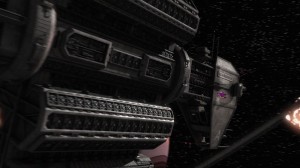
I took another pass at the lighting rig for Rhys Salcombe‘s Minbari Warcruiser, brightening it considerably and switching the lights between the bottom ribs to single points rather than pairs of spots. I experimented with doing the effect with a luminance map, but it didn’t quite achieve the goal, so I stuck with doing it with lights. I also created a beaten-up version of the ship to represent the Trigati, to give some visual credence to the idea that the ship had been square in the middle of the biggest battle of the Earth-Minbari War when it deserted and hadn’t been able to make port for repairs in the twelve years since, and to differentiate it from the second Warcruiser that shows up at the end. It’s the first time I’ve done modeled damage on a spaceship, so that was fun.
The top fin has a blast mark on both sides, inspired by one of the shots of the Battle of the Line in “In the Beginning,” where a Starfury crashes into that section of a Minbari ship and blows out through the other side. I chewed away the lower left fin, and added a fairly large hole on the right side of the main hull, as if the right forward gun on the ship had misfired. I put a layer of procedural dirt over the whole ship, as well. I’m sure some people will think I’m overdoing it, given how much the Minbari outmatched Earth during the war, but there were a fair few shots of damaged Minbari ships in ITB, and I figured a Warrior Caste ship would be more likely than most to wade into the middle of the fight where they might take a few blows.
